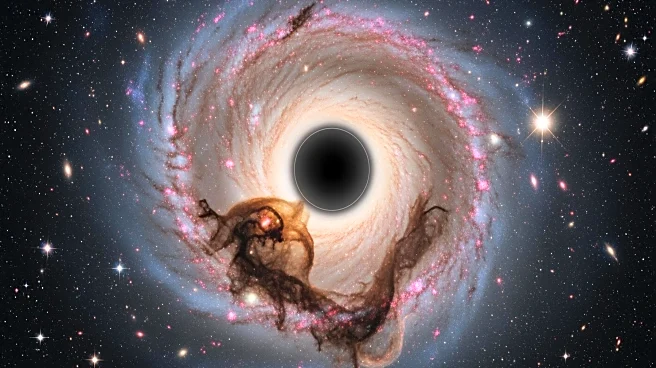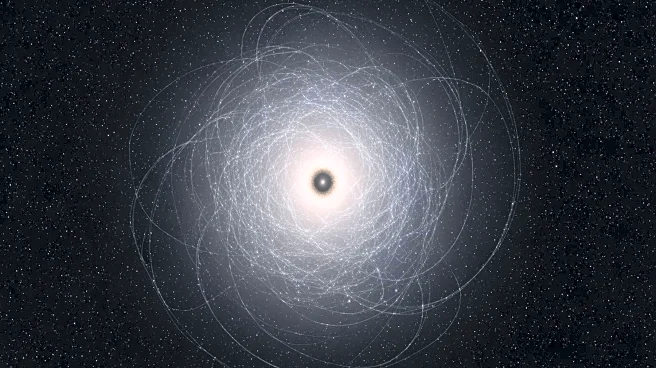What's Happening?
An international team of researchers led by the Leibniz Institute for Astrophysics Potsdam (AIP) has conducted a study analyzing stellar velocities from 12 of the smallest and faintest galaxies in the Universe. The study aims to address the longstanding
debate over Dark Matter, a theoretical mass proposed in the 1960s to explain the rotational curves of galaxies. The researchers found that the internal gravitational fields of these dwarf galaxies could not be explained by visible matter alone, suggesting the presence of Dark Matter. The study challenges the Radial Acceleration Relation (RAR), which posits a simple relationship between visible matter and gravitational force, indicating that this theory breaks down in smaller galaxies. The findings were published in the journal Astronomy & Astrophysics.
Why It's Important?
The study's findings are significant as they bolster the case for Dark Matter, a mysterious substance that is believed to make up most of the Universe's mass. By providing evidence that dwarf galaxies do not conform to the expectations of larger systems, the research challenges existing theories like Modified Newtonian Dynamics (MOND), which posits changes in gravity laws at low accelerations. The results suggest that these galaxies are surrounded by invisible Dark Matter halos, providing 'missing information' needed to determine gravitational fields. This research narrows the search for Dark Matter and rules out alternative explanations, potentially guiding future observations and theoretical models.
What's Next?
Future observations targeting even fainter and more distant galaxies are expected to further narrow the search for Dark Matter. Researchers will continue to explore the nature of Dark Matter, aiming to address questions about its composition and confirm its existence. The study's findings provide a foundation for more detailed analysis of dwarf galaxies, which could lead to breakthroughs in understanding the Universe's mass distribution and the role of Dark Matter.
Beyond the Headlines
The study highlights the importance of dwarf galaxies in cosmological research, offering insights into the gravitational dynamics of the Universe's smallest systems. By challenging existing paradigms, the research encourages a reevaluation of gravitational theories and the role of invisible mass in shaping cosmic structures. The findings may influence future theoretical models and observational strategies, contributing to a deeper understanding of the Universe's fundamental properties.













